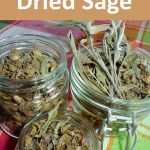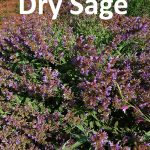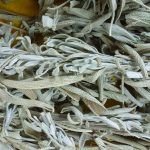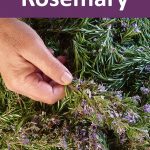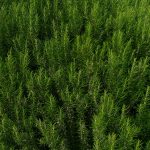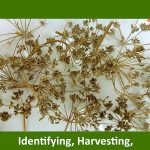As this piece of land was completely wild when I inherited it, there were numerous wild sage plants dotted around the area.
I decided to keep most of them while some of the plans I replanted in the spaces that are more suitable.
In the hilly, dry and rocky areas in the Mediterranean, where I am located, sage is growing wild and there is a lot of it.
People are regularly foraging it in springs and summers to dry and preserve for later use as a spice in cooking, for herbal tea or as a traditional medicine to help with sore throat and the common cold.
I like to mix it with honey – one small teaspoon every cold winter morning.
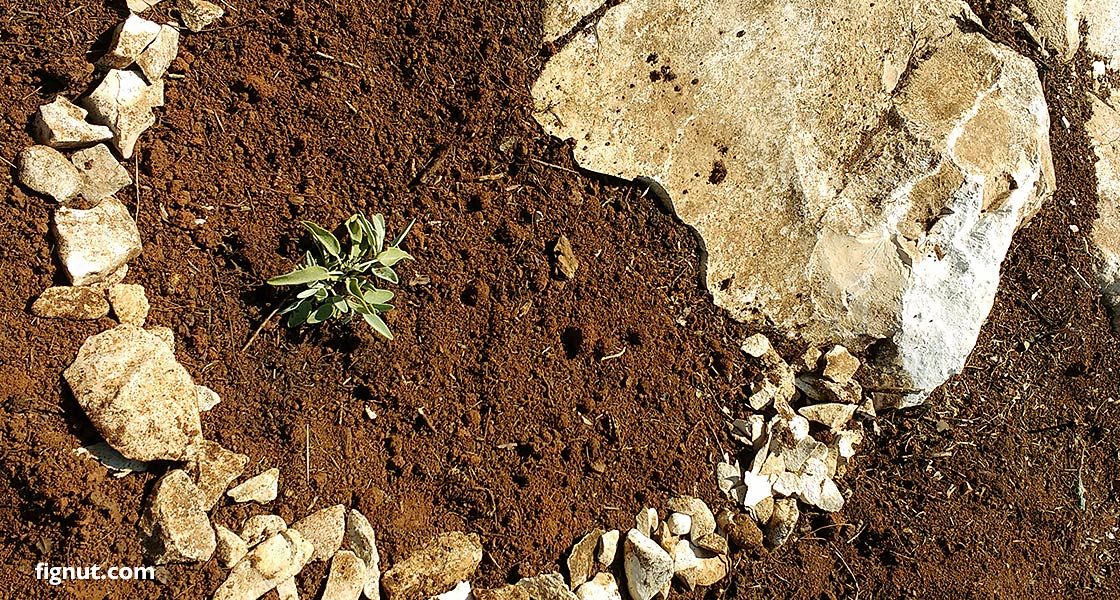
Sage baby plant, which I recently replanted in the corner, near the rocks
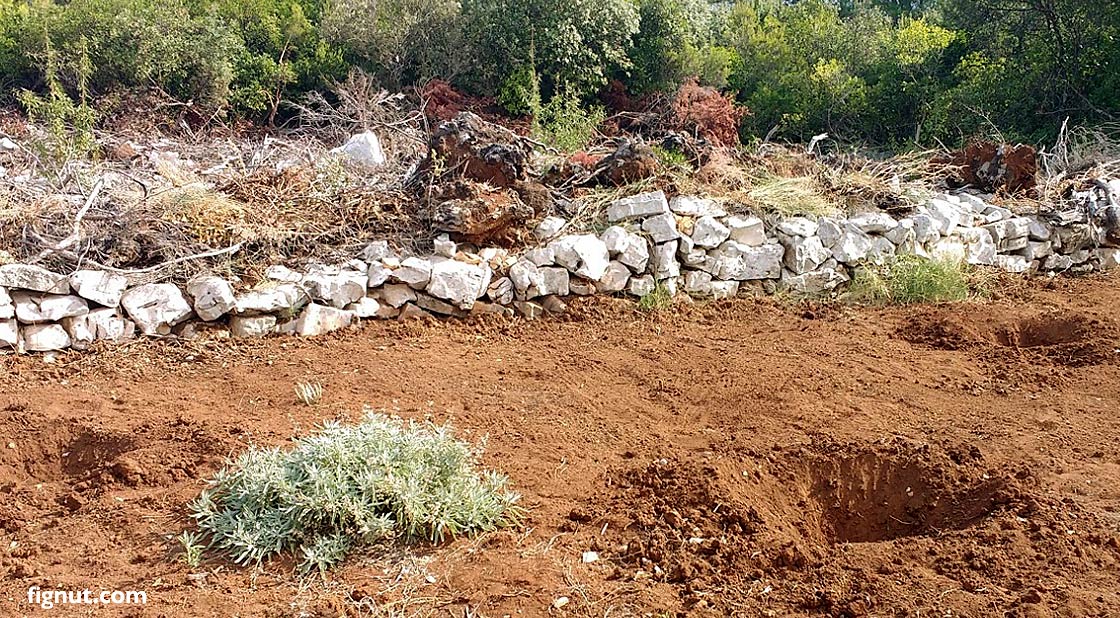
The large wild sage plant that I decided to keep right in the middle of my newly created fig garden.
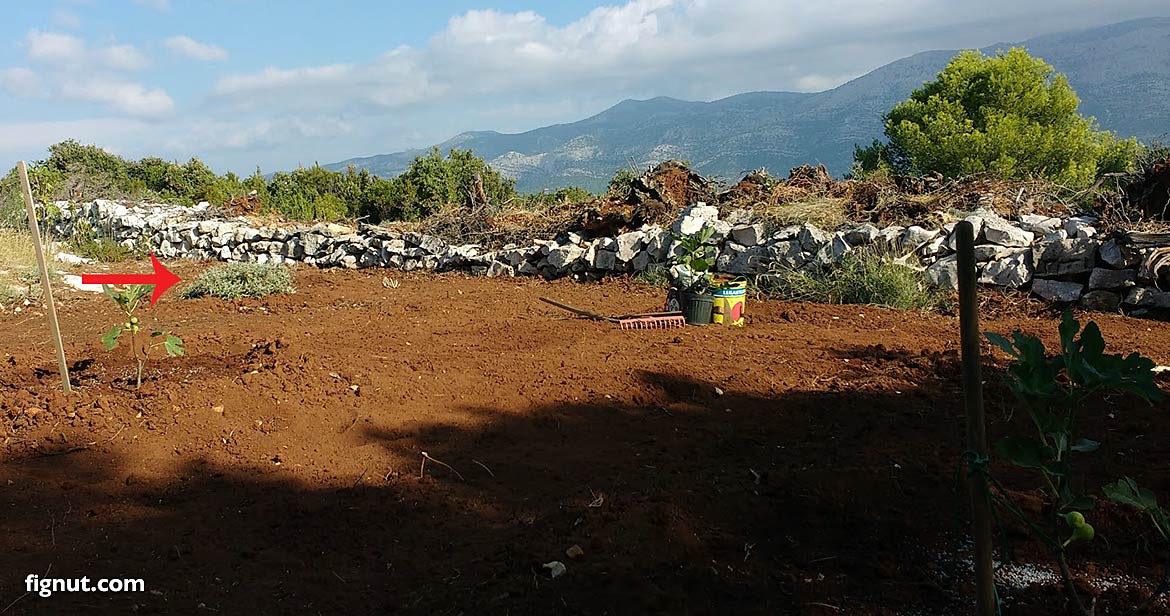
My garden with sage in situ
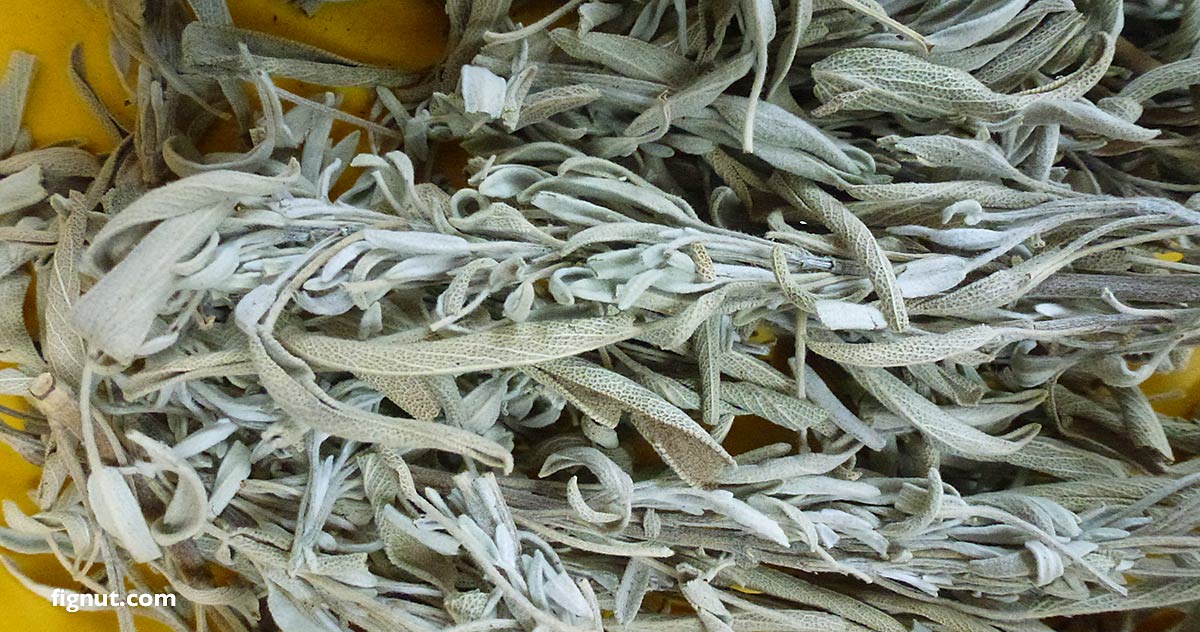
My wild sage leaves are drying on the tray.
In the video below, I am harvesting my wild sage:
How to Store Dried Sage
Once your sage is harvested and dried, the next thing to do is to store it the right way until you are ready to use it. Depending on how much of the sage you dried, you can choose several options to store. From my experience, the best option is to choose an air-tight container that Read more > How to Store Dried SageHow to Dry Sage
Drying wild sage leaves and flowers and foraging them in the fields is something which I regularly do in the springs. I collect as much as I can leaves and flowers of this lovely and aromatic herb and later on when dried, I use the dry flowers and leaves for cooking and making tea. Here Read more > How to Dry SageSage
As this piece of land was completely wild when I inherited it, there were numerous wild sage plants dotted around the area. I decided to keep most of them while some of the plans I replanted in the spaces that are more suitable. In the hilly, dry and rocky areas in the Mediterranean, where I am Read more > Sage
